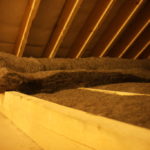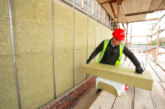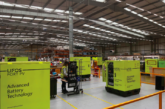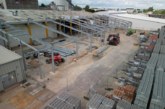Rosie Milner, Manager from online builders’ merchant Insulation Superstore, looks at some of the sustainable insulation solutions currently available.
With the pending changes to Part L of the Building Regulations on the horizon and the countdown for the UK Government to achieve Net Zero status by 2050 in the background, the need to improve the energy-efficiency of new and existing housing stock is a key focus for the industry. Insulation is set to play a pivotal role in meeting these targets and while achieving lower U-values is a must, so too is considering the overall environmental impact of a product. Fortunately, recent innovations giving contractors more choice than ever before.
Insulation comes in all shapes and sizes, and choosing the right product to suit specific performance requirements and budgets can be tricky. Popular products such as mineral wool, PIR boards and multi-foil insulation lead the way in terms of cost-effectiveness and thermal-efficiency, helping to achieve lower U-values and lower carbon emissions. Although operational efficiency remains a key priority, increasingly contractors and developers are recognising the benefits of taking a more holistic approach to specifying insulation, looking at the sustainability of the product in terms of its recyclability and embedded carbon, as well as how easily and safely it can be installed and disposed of. This has given rise to a raft of new product innovations and an even greater variety of solutions to choose from.
Back to nature
Although strictly speaking not a ‘new’ insulation material, products that harness the natural thermal-efficiency of sheep’s wool are becoming more and more popular. Used throughout the centuries as a sustainable solution to keeping homes warm and dry, although its thermal performance isn’t the highest by today’s standards, wool-based insulation does offer a number of additional benefits. For example, the natural attributes of wool means that it can absorb and release moisture without any detriment to its thermal qualities, making it suitable for lofts, basements and general walls and floors. Wool insulation also has a natural fire resistance owing to the moisture in the fibres preventing it from igniting easily and as it is can be sustainably sourced here in the UK, it scores pretty highly in terms of its eco-friendly credentials.
Another ‘green’ option is insulation that is plant-based. Hemp is a fast-growing and easy to cultivate plant and much like sheep’s wool, has been used throughout history for a variety of purposes, including insulating homes. The strong and woody plant fibres can be used to create hemp wool, which in turn can be used to create a breathable insulation that is particularly suited for use in timber-framed buildings. It’s great for managing condensation and mould but not so good in very damp conditions, so if you’re considering it for a basement project, don’t forget to use a good-quality vapour control layer.
Healthy environments
Other options that can contribute to a more sustainable design scheme include insulation made from recycled plastic bottles and ‘waste’ wood fibres generated by other manufacturing industries and which would otherwise be bound for landfill. Both types offer good thermal efficiency, are competitively priced and can be recycled again.
Another key plus point for insulation made from recycled plastics, wood grain, hemp or wool is how safely they can be installed – most require little or no PPE, are easy to cut and handle and don’t contain any irritants than can cause itching or discomfort during installation or removal. It’s true that these ‘eco-friendly’ insulation materials don’t perform as well as other man-made insulation products in terms of U-values but they do contain fewer chemicals in their composition.
Ultimately, the new Building Regulations will determine the exact targets that new homes need to meet and this will be the main influence on which type of insulation is more appropriate to use. But when it comes to reducing carbon footprints, considering all the different performance benefits of all the insulation options available is definitely a step in the right direction.









